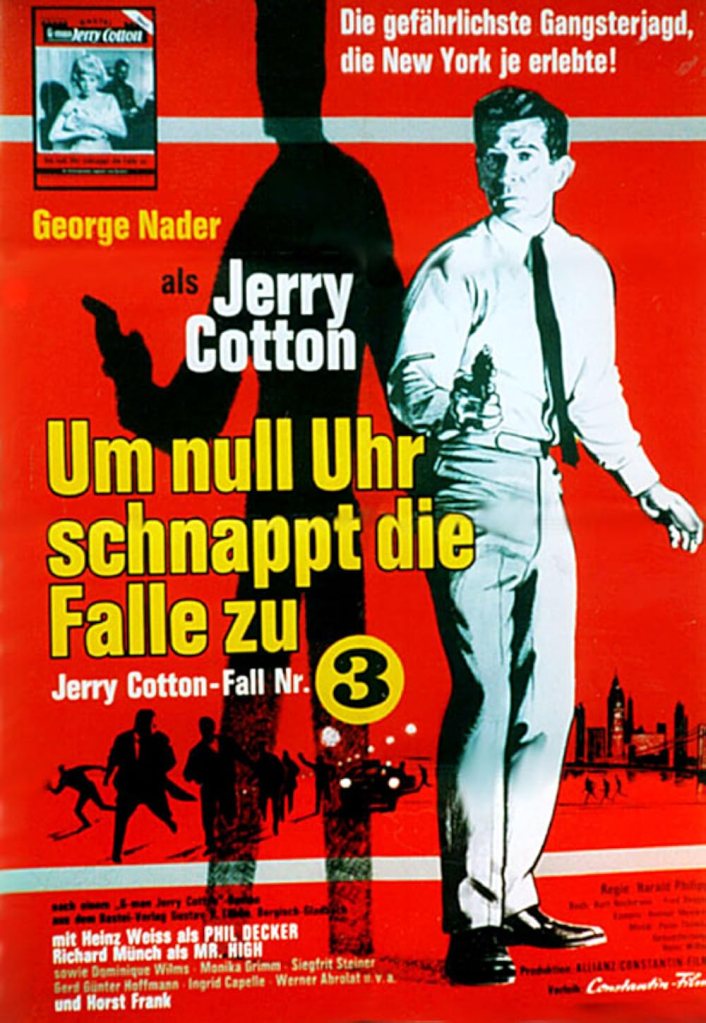‘Your timpani is urgently needed.’
A truck filled with canisters of unstable nitroglycerin is hijacked in New York. Subsequently, the cargo falls into the hands of a gangster who tries to blackmail the city. A top FBI agent is assigned to defuse the situation…
George Nader reprises the role of semi-‘ Bond On A Budget’ secret agent Jerry Cotton for the third of his black-and-white adventures. Harald Philipp directed this West German-French co-production, which co-stars Horst Frank and series regular Heinz Weiss.
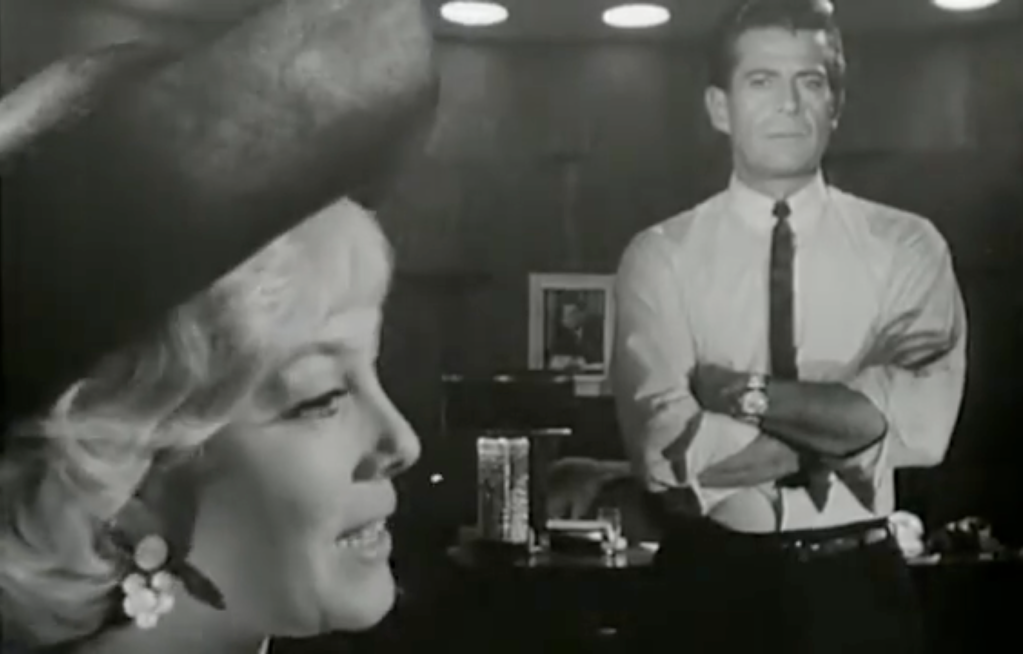
Manhattan is in the grip of a severe heatwave, and what better reason for two truck drivers to make their regular stop for a beer and a sandwich at a hotel on the edge of the city? Unfortunately, thieves Harry (Allen Pinson) and Krot (Werner Abrolat) know their routine and hot-wire the truck, planning to use it in a heist. However, the vehicle hasn’t been unloaded and still contains 30 canisters of nitroglycerin. Arbolat takes an immediate powder, but Pinson follows the original plan. Crashing the truck into the front of an uptown jewellery store proves a perfect diversion for accomplice Maureen (Dominique Wilms) to pocket some free samples as customers and staff run for cover.
However, local crime kingpin Larry Link (Frank) is far more interested in the nitro than in receiving the stolen sparklers, forcing Pinson to reveal its location. Meanwhile, FBI headman, Mr High (Richard Münch), has put top agent Jerry Cotton (Nader) and his partner Phil Decker (Weiss) in charge of locating the missing explosives. Unfortunately, there’s an added deadline as nitro expert Dr Smeat (Sigfrit Steiner) confirms that the hot weather will cause the chemicals to ignite on their own. News of the crisis gets out after Frank informs the press, and he kidnaps Steiner to aid him in his plans to blackmail the city. With time running out, the authorities agree to pay, but Nader and Weiss are closing in on the crime lord.
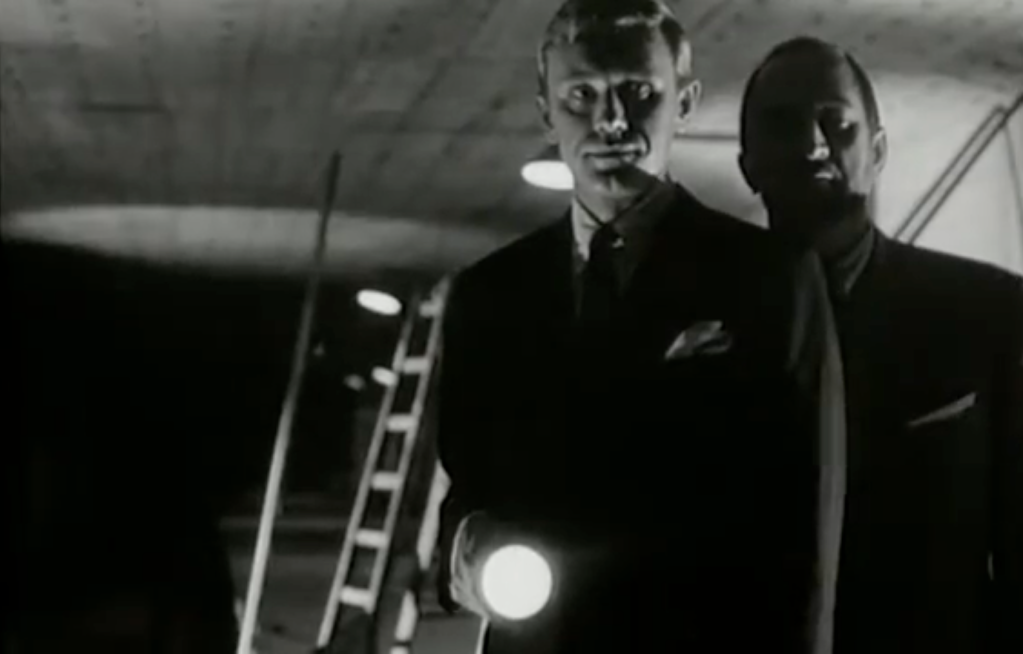
The Jerry Cotton series ran for a total of eight films that were released to theatres in just under four years. They are chiefly remembered for two things: the filmmaker’s desperate efforts to make them look like they were shot in America and the jazzy scores of composer Peter Thomas. They attempted the first of these by raiding their local reasonably priced film library for background footage of the Big Apple; in this case, multiple shots of traffic, freight yards, the interior of public places and some of New York’s finest going about their duties on the street. It’s not necessarily going to look awful because presenting everything in black and white helps hide the mismatch in picture quality to some extent, but it’s pretty obvious at times.
What does look awful, however, is when they try to integrate their actors with it through back projection. It’s ‘Green Screen’ technology but without the technology. The actors are filmed standing in front of a screen that’s playing the footage. There are times when these ‘process shots’ are not too embarrassing, but others when they are fake as hell, particularly when the principals are driving their cars. This was a particular issue with the early entries in the series, and this is probably the worst example of it simply because it’s so prevalent throughout. The series went into colour for its second half, and the practice decreased, probably due to the lack of available library shots in colour or the more significant technical challenges involved.
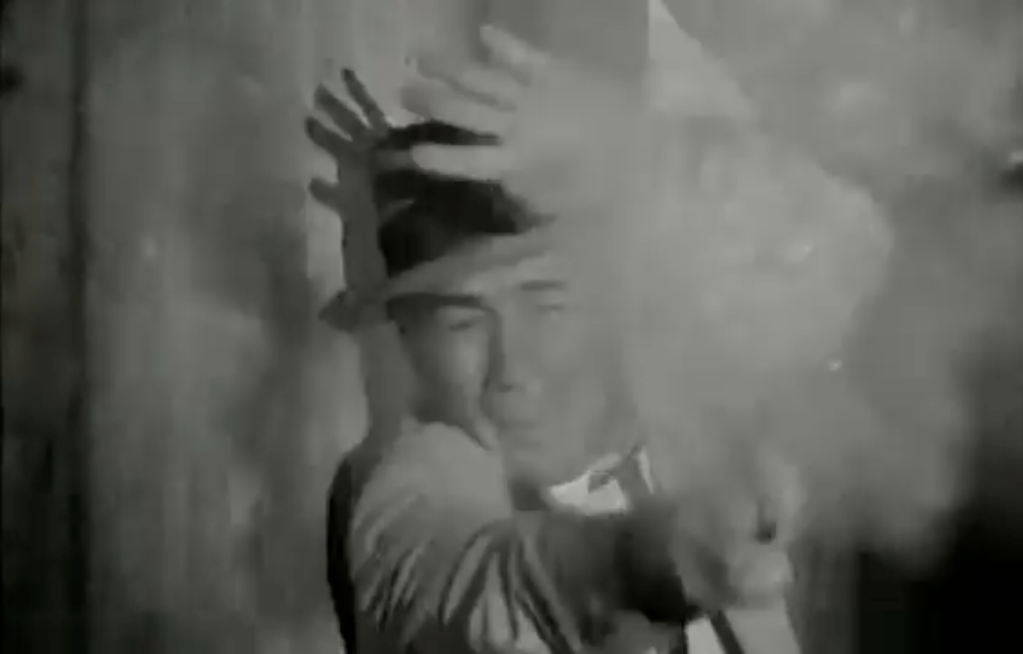
The film’s other main virtue is the jazz stylings of Peter Thomas’ musical soundtrack. His work was ever present throughout the series, with punchy brass fills, driving rhythm and even some scat singing on this occasion. His contributions weren’t always well-used, sometimes being inserted at inappropriate moments with distracting results. This time, however, the music complements what’s unfolding on the screen and helps to lift the audience through some of the drama’s rougher spots.
Jerry Cotton was never an agent juggling gadgets who tangled with supervillains and stolen super weapons. He didn’t sneak into secret bases built into the sides of erupting volcanoes or find sexy babes in his shower stall when checking into luxurious hotels. His world was more a grounded one, his opponents of the same stripe as Frank: big-time criminals pulling off heists, blackmail schemes and robberies. Some might even question his Eurospy credentials in the first place. Thankfully, the reliable Frank gets things over the line in that department with his wonderfully arrogant bad guy. He turns a deaf ear to torture while casually reading a magazine and issues orders from a reclining chair in the paddling pool in the middle of his apartment. He even plays with a toy boat.
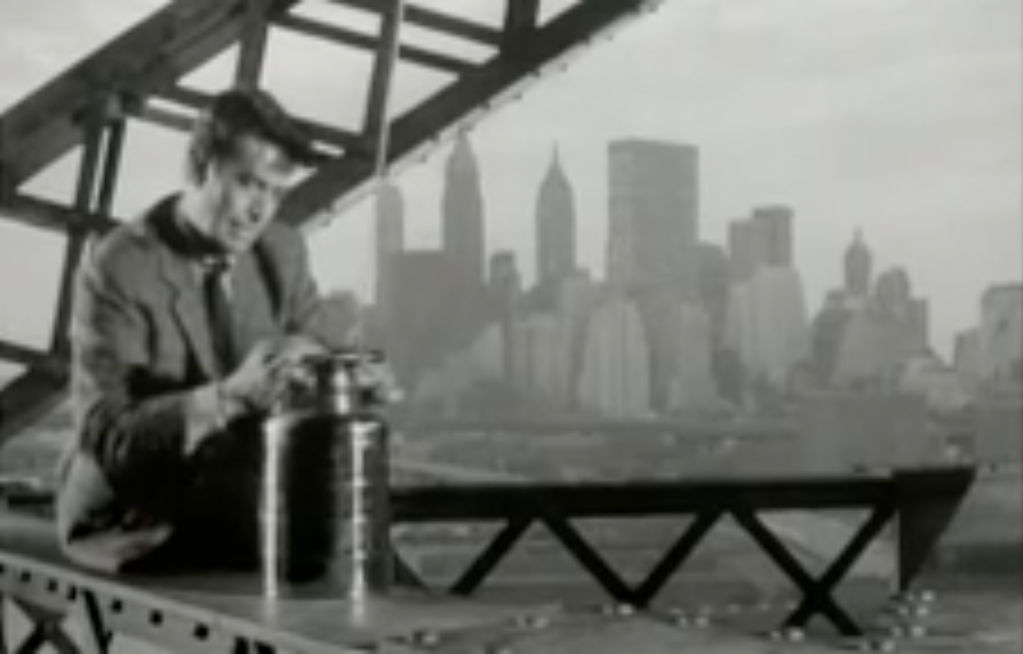
There are also a couple of surprisingly intense sequences that rise above the mediocrity of the rest of the 85-minute running time. The excellent use of contrasting bright lights and shadows gives the scenes set in a subway construction site a real sense of menace. Director Philipp gives these a level of gritty realism more associated with urban crime drama than the usual spy shenanigans, and it’s very striking. Elsewhere, Nader ends up hanging from a window washer’s cradle halfway up the side of a tall building during a fight, and the fake backdrop is well enough integrated to make it work. He climbs back up just in time to pull Weiss out of the fire after he’s been brained with a window. Honestly, he’s hopeless; you can see why Nader has to do everything himself!
Unfortunately, for every moment of cleverness or invention, such as when Nader uses a villain’s discarded cigarette to burn through the ropes that tie his hands, there are three or four howlers. No sooner have we heard from boffin Steiner how dreadfully unstable and unpredictable nitro becomes under high ambient temperatures than we discover that he’s supplied Münch’s office with a countdown clock that can predict the coming explosion to the exact second. Worse than that, the brief confrontation that passes for the film’s climax is a mixture of mismatched stock shots, a few unconvincing miniatures and the shoddiest process work in the entire enterprise. The supposed mass exodus of a panicking New York populace is conveyed with stock shots of slow-moving rush hour traffic and a few people getting on buses. We don’t even see Snake Plissken hurtling across a mined bridge in a yellow taxi cab.
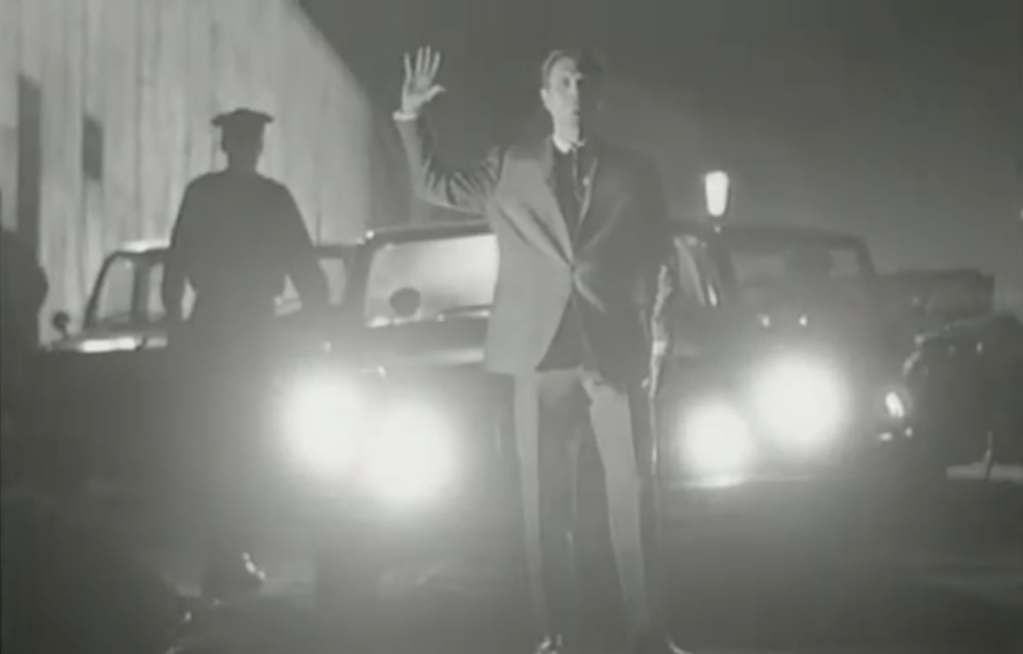
Frank’s prolific screen career lasted over four decades and included over 170 appearances on television and in films. He mainly appeared across continental Europe, his first notable role in cult cinema being as insane medico Dr Ood in the horror/science-fiction mashup of ‘The Head/Die Nackte und der Satan’ (1959). He mostly specialised in villains, taking on torture duty for Christopher Lee in ‘The Vengeance of Fu Manchu’ (1967), menacing Bond wannabe Ray Danton in ‘Code Name: Jaguar/Corrida pour un espion’ (1965) and earning his Giallo credentials in Umberto Lenzi’s ‘So Sweet…So Perverse/Così Dolce…Così Perversa’ (1969) and Dario Argento’s ‘The Cat o’Nine Tails/Il gatto a nove code’ (1971). Perhaps inevitably, though, given his blonde looks and aristocratic bearing, he was often in demand to play Nazi officers in war pictures, although he was also a regular in Spaghetti Westerns. Behind the public image, he was a family man who wrote songs and poetry. He passed away suddenly at the age of 69.
A weak entry in a somewhat disappointing series.

